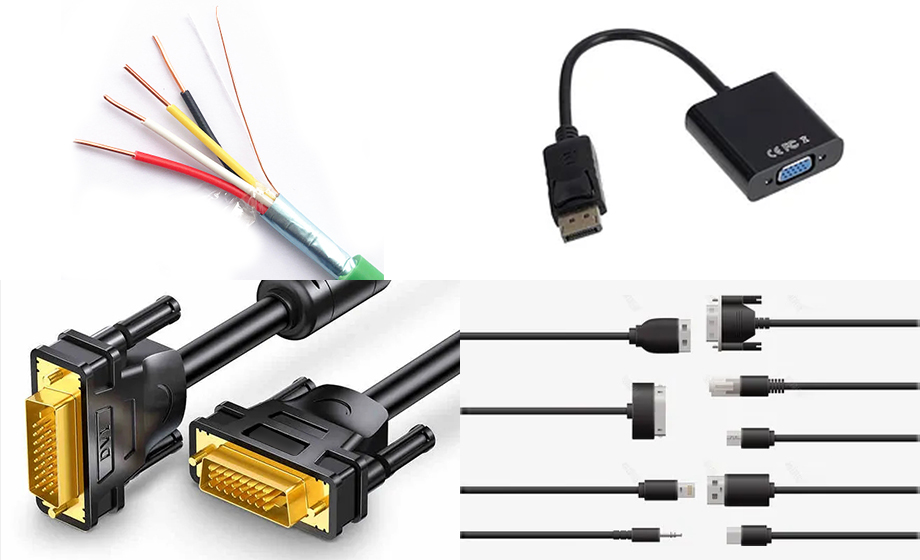What is the transmission distance of several commonly used cables in communication engineering? The transmission distance of cables has always been the most common question asked by weak current people. Every day we have an indissoluble bond with cables. Only by clearly understanding the use of cables can we feel convenient in communication engineering projects. In this issue, we'll summarize commonly used cable transmission distances.

1. Network cable
Here, let's briefly talk about network cables. Everyone is familiar with network cables. There are different transmission distances according to different specifications of the network cable. network transmission distance. The network cable is carrying the network signal. If you go beyond what the network cable itself can handle, the signal will attenuate. In severe cases, the network signal will be interrupted. The fifth and sixth category is 100 meters, and the regular oxygen-free copper category 6 line can reach about 120 meters. If you want to increase the transmission distance, the repeater can be installed between two twisted pairs, up to 4 repeaters can be installed. If 4 repeaters are installed to connect 5 network segments, the maximum transmission distance can reach 500m.
2. Optical fiber
The transmission distance of communication engineering network cables is limited and cannot solve the problem of long-distance data transmission, so optical fibers can be used for long-distance transmission. Optical fiber is divided into multi-mode and single-mode. Multi-mode transmission is farther than network cable, but shorter than single-mode. In 10mbps and 100mbps Ethernet, multimode fiber can support a transmission distance of 2000 meters; in 1Gbps Gigabit network, multimode fiber can support a transmission distance of 550 meters; so multimode is less used now.
Compared with multimode fiber, single mode fiber can support longer transmission distance. In 100mbps Ethernet or even 1g Gigabit network, single-mode fiber can support transmission distances of more than 5000m. The equipment used in single-mode optical modules is twice that of multi-mode optical modules, so the total cost of single-mode optical modules is higher than that of multi-mode optical modules; the transmission distance of single-mode optical modules can reach 150 to 200km. Therefore, communication engineering optical fiber can be used for long-distance transmission, such as remote monitoring projects.
3. HDMI cable
The HDMI high-definition multimedia interface is generally used for high-definition monitors, and can be connected to HDMI monitors and monitors. Now many network boxes can also be connected to TVs through cables to transmit audio and video signals. Generally, the HDMI signal transmission is less than 30 meters, so the maximum distance of the average quality wire transmission is about 15 meters.
So how to transmit HDMI?
1. You can use a conversion extender
HDMI signal does not pass through other devices (transmits 120 meters). HDMI signals generally cannot be directly transmitted to more than 30 meters with HDMI cables, and there are almost no finished HDMI cables of more than 30 meters on the market. In this case, if the HDMI signal is transmitted to the display device and the HDMI signal does not pass through other devices, we can use the method of extending the signal through the HDMI network to extend the signal. The HDMI network extender end (HDMI input, network output) and receiver (network input, HDMI output) can be extended by 100 meters (category 5 network cable) and 120 meters (category 6 network cable).
2. HDMI fiber optic extender.
HDMI fiber optic extenders can also be used to transmit farther.
HDMI extension can extend HDMI, or use HDMI fiber optic cable according to the actual situation.
4. DVI
DVI is a digital video interface. A typical DVI cable can only effectively transmit signals up to about 5 meters. If it exceeds 5 meters, the signal will be attenuated. This shortcoming greatly limits the popularization and application of DVI equipment. DVI-D can only receive digital signals; DVI-I can simultaneously receive 7-15m digital signals and analog signals.
5. VGA cable
The VGA cable transmits analog signals and is a data transmission cable connecting a computer graphics card and a monitor or TV. It is responsible for outputting the corresponding image signal to the display, which is the bridge between the computer and the display. It is widely used in the field of color displays, but it is easy to attenuate, the transmission distance is short, and it is susceptible to interference. But its transmission distance is stronger than HDMI and DVI, and its 3+4/6VGA transmission distance is 20-40m.
6. RS232 and RS485
1. RS232:
RS232 transmission distance is limited, the maximum transmission distance standard value is 15m, only point-to-point communication, and the maximum transmission rate is 20kB/s.
2. RS485:
The maximum transmission distance of RS485 is 1219 meters. The maximum transmission rate of communication engineering is 10mbps, and the maximum communication distance can only be achieved at a transmission rate of 100kb/s. Impedance matching is used. Low attenuation special cable up to 1800 meters! Over 1200 meters, repeaters (up to 8) can be added to make the transmission distance close to 10km.
Seven, USB cable
Abbreviation for USB (Universal Serial Bus) is an external bus standard that regulates the connection and communication between computers and external devices. It is an interface technology applied to the PC field. The USB interface supports plug-and-play and hot-plugging of the device. The effective distance specified by the USB protocol is 5 meters, and a longer USB extension cable can be used, and the quality of the cable is better. Poor quality USB extension cables are less than 5 meters. Of course, if the USB cable wants to transmit long distances, you can also use an extender.



